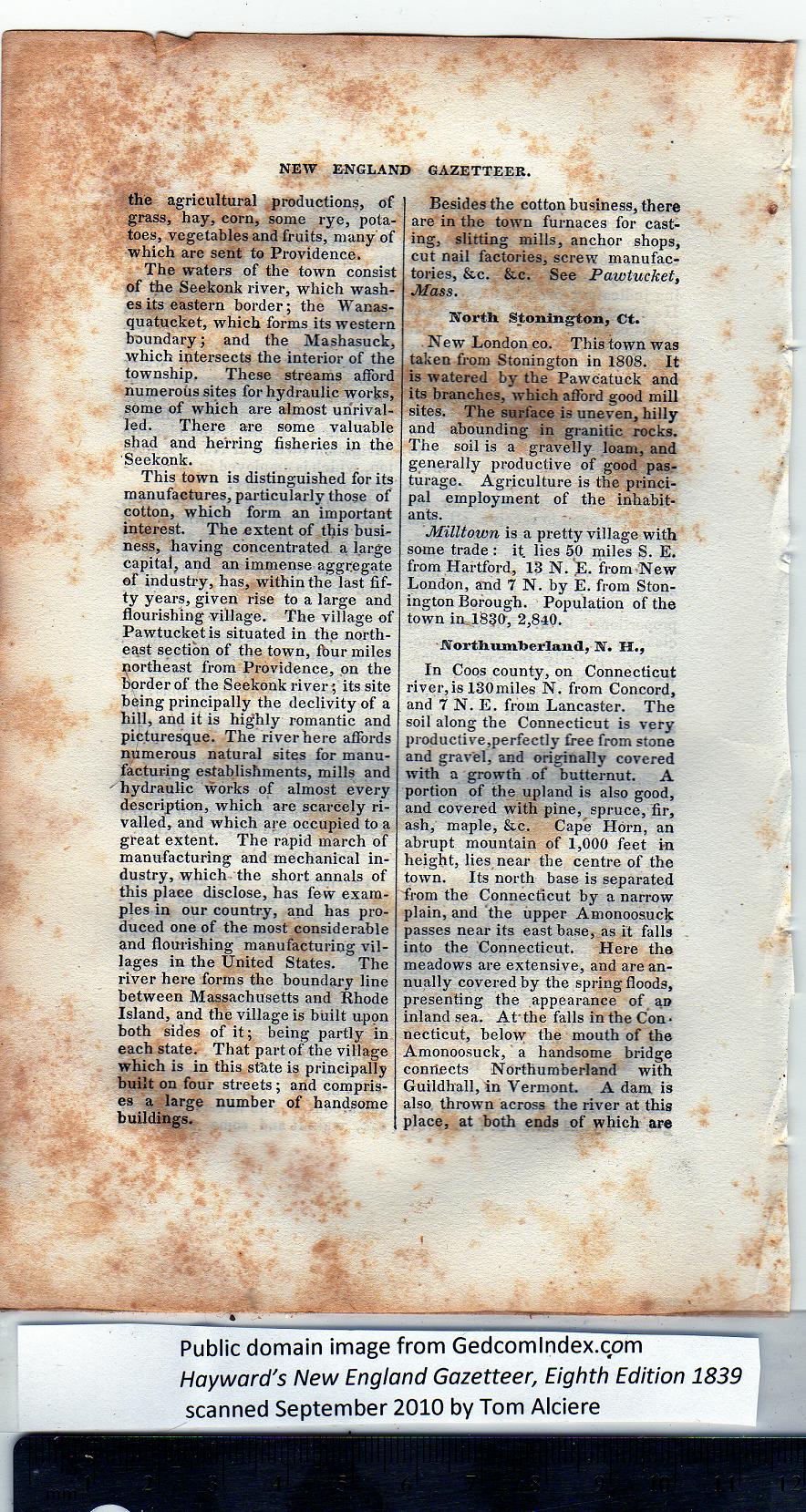|
the agricultural productions, of
grass, hay, corn, some rye, pota-
toes, vegetables and fruits, many of
which are sent to Providence.
The waters of the town consist
of the Seekonk river, which wash-
es its eastern border; the Wanas-
quatucket, which forms its western
boundary; and the Mashasuck,
which intersects the interior of the
township. These streams afford
numerous sites for hydraulic works,
some of which are almost unrival-
led. There are some valuable
shad and herring fisheries in the
Seekonk.
This town is distinguished for its
manufactures, particularly those of
cotton, which form an important
interest. The extent of this busi-
ness, having concentrated a large
capital, and an immense aggregate
of industry, has, within the last fif-
ty years, given rise to a large and
flourishing village. The village of
Pawtucket is situated in the north-
east section of the town, fbur miles
northeast from Providence, on the
border of the Seekonk river; its site
being principally the declivity of a
hill, and it is highly romantic and
picturesque. The river here affords
numerous natural sites for manu-
facturing establishments, mills and
hydraulic works of almost every
description, which are scarcely ri-
valled, and which are occupied to a
great extent. The rapid march of
manufacturing and mechanical in-
dustry, which the short annals of
this place disclose, has few exam-
ples in our country, and has pro-
duced one of the most considerable
and flourishing manufacturing vil-
lages in the United States. The
river here forms the boundary line
between Massachusetts and Rhode
Island, and the village is built upon
both sides of it; being partly in
each state. That part of the village
which is in this sthte is principally
built on four streets; and compris-
es a large number of handsome
buildings. |
Besides the cotton business, there
are in the town furnaces for cast-
ing, slitting mills, anchor shops,
cut nail factories, screw manufac-
tories, &c. &c. See Pawtucket,
Mass.
North Stonington, Ct.
New London co. This town was
taken from Stonington in 1808. It
is watered bj’ the Pawcatuck and
its branches, which afford good mill
sites. The surface is uneven, hilly
and abounding in granitic rocks.
The soil is a gravelly loam, and
generally productive of good pas-
turage. Agriculture is the princi-
pal employment of the inhabit-
ants.
Milltown is a pretty village with
some trade : it lies 50 miles S. E.
from Hartford, IB N. E. from New
London, and 7 N. by E. from Ston-
ington Borough. Population of the
town in 1830, 2,840.
Northumberland, N. H.,
In Coos county, on Connecticut
river,is 130miles N. from Concord,
and 7 N. E. from Lancaster. The
soil along the Connecticut is very
productive,perfectly free from stone
and gravel, and originally covered
with a growth of butternut. A
portion of the upland is also good,
and covered with pine, spruce, fir,
ash, maple, &c. Cape Horn, an
abrupt mountain of 1,000 feet in
height, lies near tbe centre of the
town. Its north base is separated
from the Connecticut by a narrow
plain, and the upper Amonoosuck
passes near its east base, as it falls
into the Connecticut. Here the
meadows are extensive, and are an-
nually covered by the spring floods,
presenting the appearance of an
inland sea. At the falls in the Con-
necticut, below the mouth of the
Amonoosuck, a handsome bridge
connects Northumberland with
Guildhall, in Vermont. A dam is
also thrown across the river at this
place, at both ends of which are |
